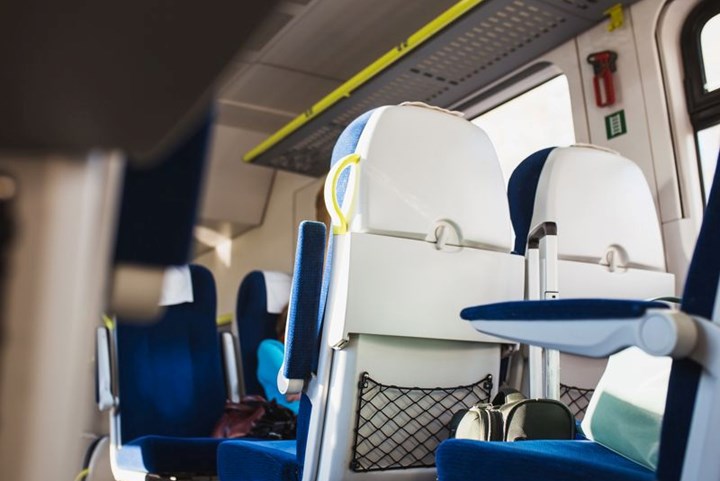Röchling launches sustainable vacuum forming materials for railway structures
Röchling’s Maywoflamm plus RC and Maywoflamm NFPA RC can be manufactured using up to 70% recycled material, making it possible to increase sustainability in customer applications.

Röchling Maywoflamm materials with high recycled content for railway applications.
Photo Credit: Röchling
(Bad Grönenbach, Germany) reports that it is expanding its portfolio of flame-retardant materials for use in railway technology applications with two new sustainable products, Maywoflamm plus RC and Maywoflamm NFPA RC. Both products can be manufactured using up to 70% recycled material, making it possible to increase sustainability in customer applications. Maywoflamm plus RC complies with the European railway standard EN 45545-2:2020, classification R6/HL2; Maywoflamm NFPA RC is testing according to NFPA 130 and BSS7239:1988 and can therefore be used in the American region. Both materials are characterized by their low weight compared to metallic materials and their high mechanical strength.
“We have defined sustainability as one of the most important strategic areas for the future,” explains Franz Lübbers, CEO of Röchling Industrial. “It is important to us to take responsibility and contribute to a sustainable future. Of course, we have focused on the needs of our customers.” The high recycled content helps customers achieve their sustainability goals. The use of high-quality recycled material conserves resources and closes loops.
“With the launch, we are offering our railway sector customers sustainable products that meet the relevant requirements for use in railway technology applications,” says Simon Kathmann, head of sales and marketing at Röchling Industrial Allgäu. “We are excited to now bring these sustainable alternatives to the market.”
Related Content
-
Prepreg compression molding supports higher-rate propeller manufacturing
To meet increasing UAV market demands, Mejzlik Propellers has added a higher-rate compression molding line to its custom CFRP propeller capabilities.
-
Infinite Composites: Type V tanks for space, hydrogen, automotive and more
After a decade of proving its linerless, weight-saving composite tanks with NASA and more than 30 aerospace companies, this CryoSphere pioneer is scaling for growth in commercial space and sustainable transportation on Earth.
-
Composites end markets: Pressure vessels (2024)
The market for pressure vessels used to store zero-emission fuels is rapidly growing, with ongoing developments and commercialization of Type 3, 4 and 5 tanks.



